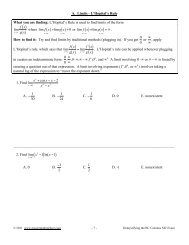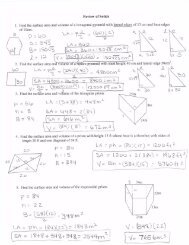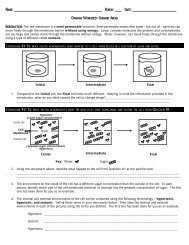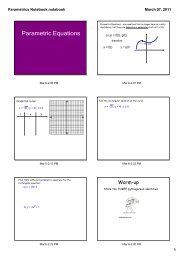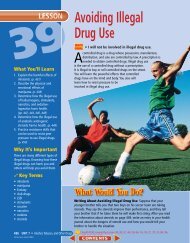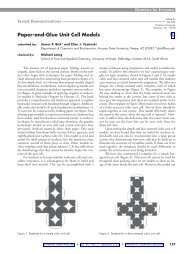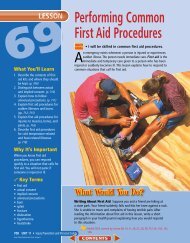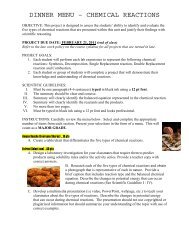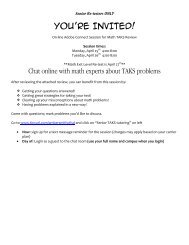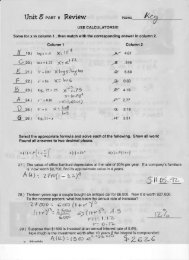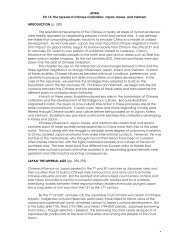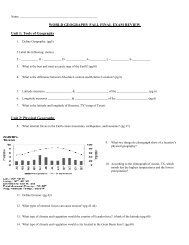Extraction of Carvone
Extraction of Carvone
Extraction of Carvone
You also want an ePaper? Increase the reach of your titles
YUMPU automatically turns print PDFs into web optimized ePapers that Google loves.
<strong>Carvone</strong> <strong>Extraction</strong> Exercise<br />
Label the lines "+" (for (+)-carvone), "-" (for (-)-carvone), "c" (for caraway extract), and "s" (for<br />
spearmint extract).<br />
See you TA if you haven't already about preparing a spotter in lieu <strong>of</strong> using a capillary tube.<br />
6) Dip the tip <strong>of</strong> a spotter (or capillary tube) into your caraway extract and quickly dab this tip onto the<br />
line where it is labeled c. You may find it beneficial to do this under UV light to see how much sample<br />
you are placing and how large <strong>of</strong> a spot you are creating. You should see a very small amount <strong>of</strong> the<br />
caraway extract soak into the plate. For the two extracts it is a good idea to spot multiple times (or to<br />
concentrate your sample) as the amount <strong>of</strong> carvone in the sample is small. Simply spot, let the solvent<br />
evaporate (leaving the sample on the plate) and spot again at the same location.<br />
7) Repeat this procedure for the spearmint extract<br />
8) Now do the same thing with the diluted (+) and (-) carvone standards. These are more highly<br />
concentrated than your extracts so make sure to just barely touch the plate with the spotter.<br />
Page 5 <strong>of</strong> 6<br />
9) When you have spotted all four <strong>of</strong> your samples, obtain about 5 mL <strong>of</strong> 10% ethyl acetate in hexane<br />
in you 250 mL beaker. Place the beaker on your bench top.<br />
10) Make sure that the solvent is initially below the line you used to spot the plate. Place you TLC<br />
gently into the beaker. You will see capillary action begin immediately as solvent runs up the plate.<br />
11) Cover the beaker to prevent evaporation (a watchglass or aluminum foil is appropriate). After a few<br />
minutes the solvent will reach the upper line. Remove the plate and allow the solvent to evaporate.<br />
12) Let the plate dry and then take it to the UV light. The spot <strong>of</strong> carvone will be visible in the UV<br />
light. Mark the spot by holding a UV light to it and circling all the spots you see in pencil. You should<br />
see a carvone spot in all four samples, though it may be larger in some than in others. Note any<br />
differences you see. Be sure to record the plate in your notebook to the correct scale.<br />
13) You can also stain the plates with a p-anisaldehyde stain. This stain turns carvone a reddish brow<br />
color and turns most other compounds blue, so it will be easy for you to identify the carvone spot.<br />
Using forceps, dip your plate into the anisaldehyde solution. Wipe <strong>of</strong>f the glass back <strong>of</strong> the TLC plate<br />
with a paper towel, and then use a heat gun the heat the plate. You will see a pinkish color develop over<br />
mhtml:file://C:\Users\dzm10601\Desktop\<strong>Carvone</strong> <strong>Extraction</strong> Exercise.mht<br />
7/26/2010



